Research on supervolcanoes gives clues to current, future climate change conditions
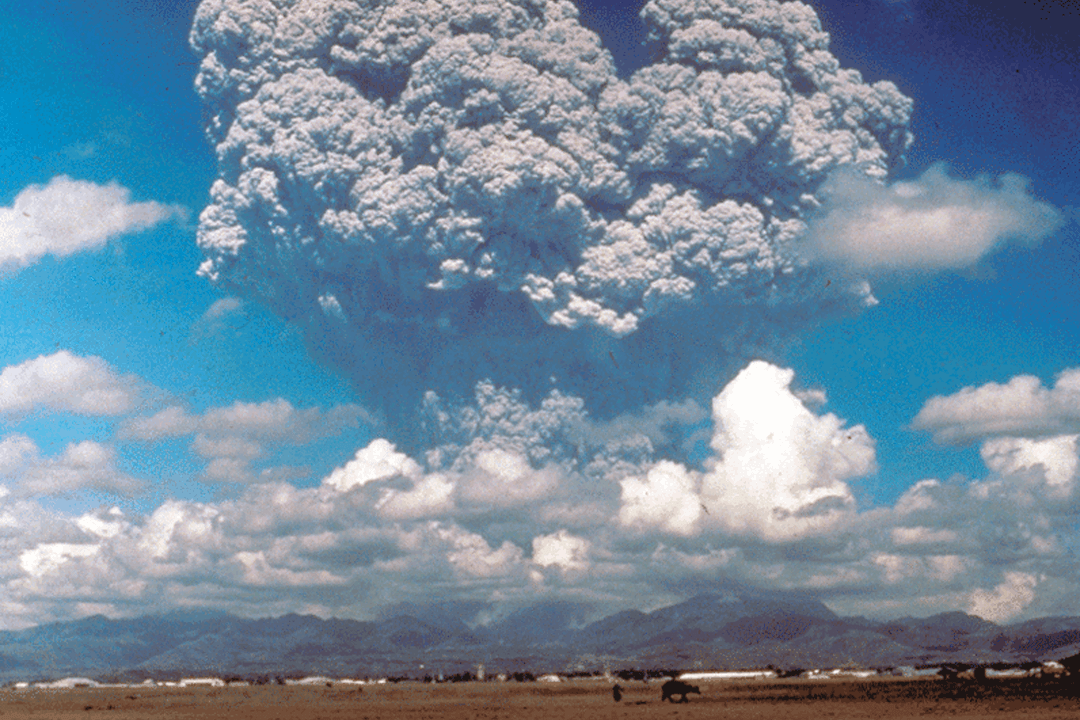
The 1991 eruption of Mount Pinatubo in the Philippines ejected large amounts of ash and gases into the air. Photo Credit: Dave Harlow, USGS (United States Geological Survey)
Dr. Georgiy Stenchikov, professor of earth science and engineering at KAUST, and partners at the Max Planck Institute, Nasa Goddard Institute for Space Studies and King Saud University research ancient supervolcanoes to learn crucial information about current and future climate conditions.
Stenchikov said that there are several important reasons why he studies past volcanic eruptions, and explained how supervolcanoes, in particular, can affect the environment and humankind.
"Supervolcanoes help scientists identify mechanisms underlying current as well as future climate processes," he said. "Volcanic eruptions allow us to better understand the physical mechanisms of climate because they are natural experiments that push the climate system to the limit. They show how the change in the Earth's radiative balance affects climate. If you know this, then you can better predict future global warming and climate change."
In his paper,
Volcanic signals in oceans (Journal of Geophysical Research: Atmospheres), Stenchikov established that, starting from 1850, volcanic eruptions delayed global warming by about 30%. The Intergovernmental Panel on Climate Change (IPCC) set the year 1850 as a standard baseline for studying global surface temperatures to encompass the pre-industrial period up to the present day, the time period when most CO2 was released.
Stenchikov said that if you want to understand climate, you have to understand the effects of volcanic eruptions on climate, and that volcanic activity anywhere in the world could affect the entire world's atmospheric conditions. He cited the Pinatubo eruption of 1991 in the Philippines as an example: "It was the strongest eruption in the 20th century, and caused a decrease in global temperature by half a degree celsius. It had an especially strong regional impact on climate in the Middle East."
Toba's effect on ozone levels
Stenchikov and team studied the most recent supervolcano event on Earth, the Toba eruption, which occurred 75,000 years ago in Sumatra. Existing research supports that Toba affected the human population size at that time, creating what's called a population bottleneck, a sharp reduction in population size caused by a singular event.
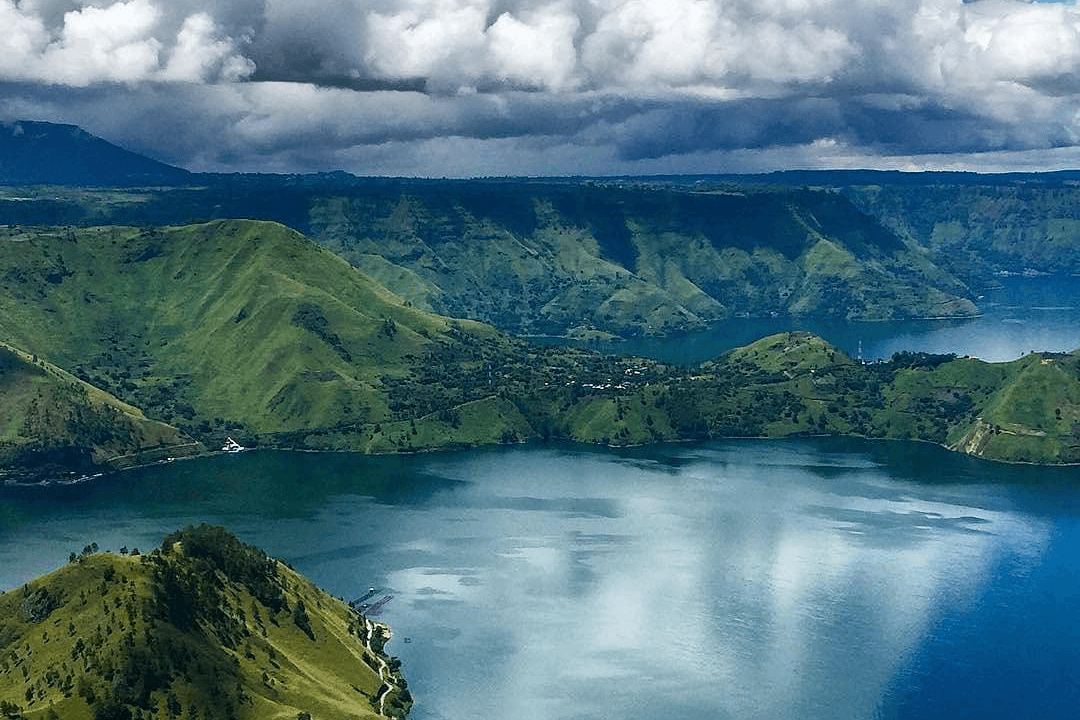
Lake Toba, North Sumatra, Indonesia, site of the Toba caldera and supervolcano eruption some 75,000 years ago. Photo credit: Ace King Hutauruk / Wikimedia Creative Commons International
"Most research on Toba asserts that the eruption likely caused a volcanic winter. This is because volcanoes eject millions of tons of gases like sulfur dioxide into the atmosphere," he said. "These gases are precursors to the formation of stratospheric aerosols — small droplets with a high concentration of sulfuric acid that can stay in the stratosphere for a few years and affect climate by reflecting solar radiation and cooling the earth. Climate records show that temperatures greatly cooled after Toba, affecting human populations, livestock and the environment."
Stenchikov said that not all analyses support this. He referenced recent studies of sediments in the bottom of Lake Malawi in Africa that did not show a big cooling effect, especially in the tropics, where most of the population was concentrated at the time, but explained: "That is why our study looked at the more diverse effects of volcanic clouds, or volcanic emissions on stratospheric chemistry."
Stenchikov's models are the first to account for the radiative effect of sulfur dioxide on radiative heating and photolysis rates in the stratosphere. The latter controls photochemical reactions in the atmosphere. His team found that a significant proportion of ozone is destroyed in the course of such eruptions.
"We know that emissions of halogens destroy ozone in the stratosphere. We also know that Toba was not rich in halogens. However, even without halogens, we found that there would be a strong depletion of the ozone layer," he said.
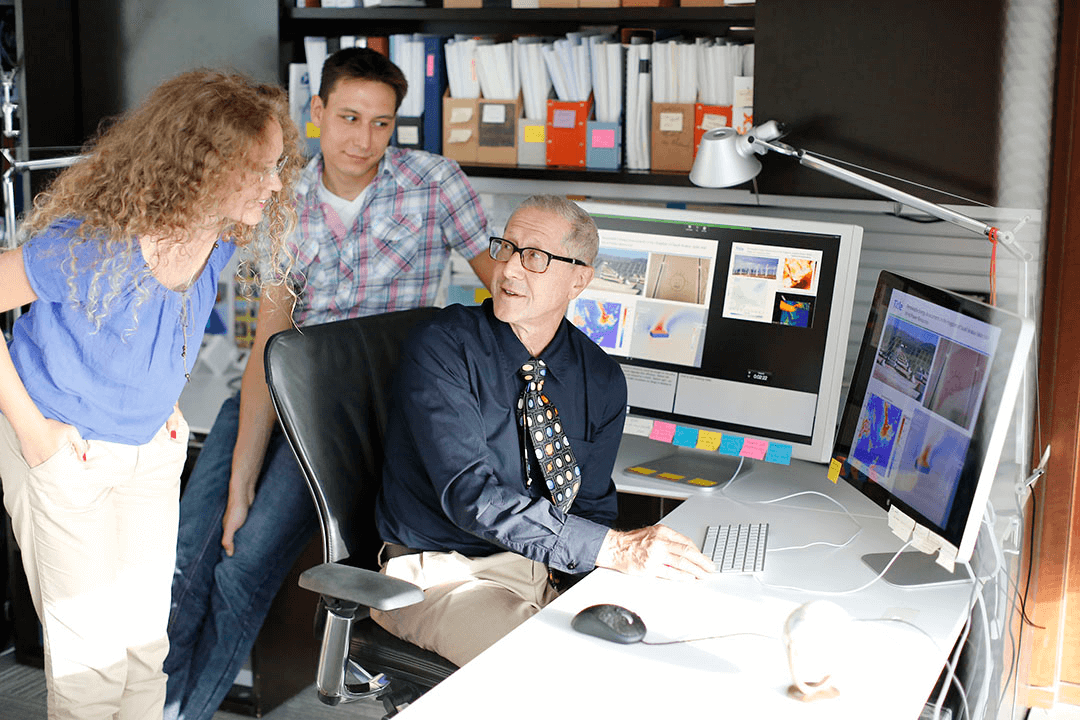
Professor Stenchikov in his office at KAUST with former Ph.D. students, Evgeniya Predybaylo and Sergey Osipov, both postdocs at the Max Planck Institute for Chemistry in Mainz, Germany. Photo courtesy of Stenchikov
In recent decades, research has established that ozone depletion is caused by chlorofluorocarbons. This phenomenon happens at poles, mostly the South Pole where there is no population, although Southern Hemisphere countries like New Zealand and Australia are also affected.
"In the case of Toba, we found an ozone hole, not in the poles but in the tropics, which lasted for several years. This affected not only humans but also vegetation and animals," he said. "This is another strong factor that could have caused the degradation of environmental conditions and a severe temperature decrease, negatively affecting the human population at that time."
The science behind the conclusions
The process behind Stenchikov's conclusions involves mathematical modeling of the system, which he then compares with observations. Even though there aren't many observations to reference from 75,000 years ago, he said that paleo data is available from this time.
Stenchikov and team put the physical assumptions into their model and devise a series of numerical experiments that demonstrate the results of these assumptions. To be sure that they are meaningful, they corroborate all physical explanations with the results.
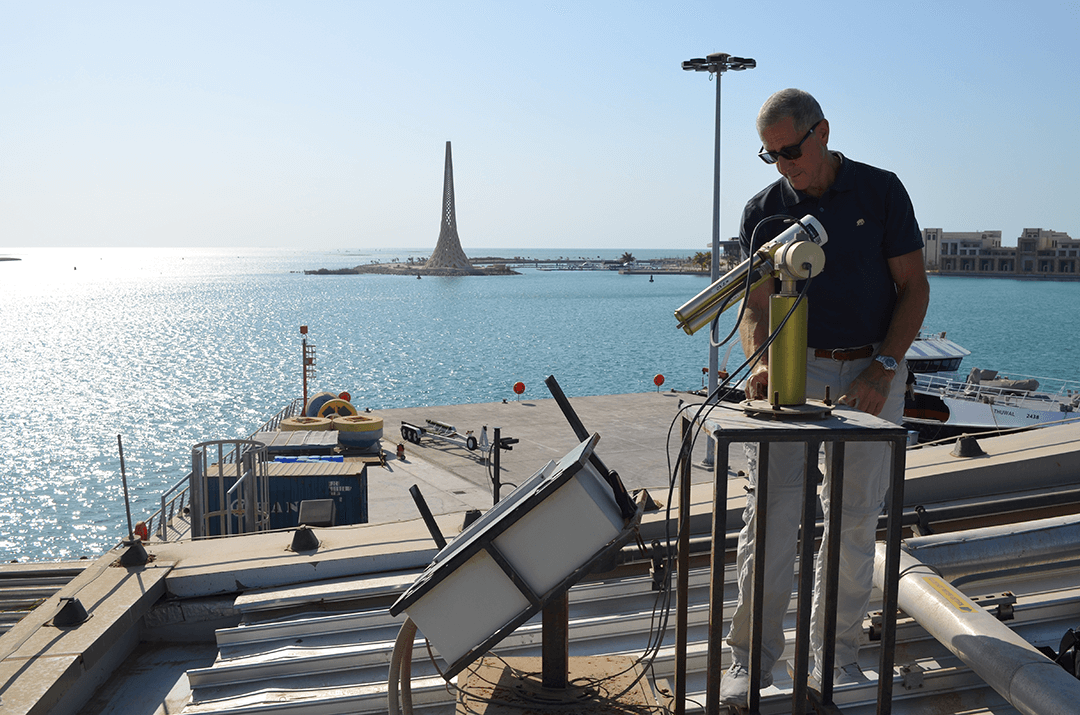
Professor Stenchikov at the Coastal and Marine Resources (CMOR) building at KAUST working with the Cimel Robotic Sunphotometer. This instrument measures atmospheric aerosol optical depth every 15 minutes and is a part of NASA AeronNet. Photo courtesy of Stenchikov
"That's roughly the way we try to study the past and future," he said. "We do simulations, aim to make them statistically significant, and find physical mechanisms that explain why we see what we see. The model accounts for the magnitude of the cumulative effect of multiple processes, but the physics of the effect should be included in the model, and the mechanism should be understood by the researchers."
KAUST and partners collaborate
To assist in the number of heavy calculations required for the model, Stenchikov's team uses KAUST's supercomputer, which he said is essential to the work: "We are very much thankful for the opportunity to use one of the best computers in the world, and to the supercomputer team for their help with this effort."
Diverse partners participated in the research. Stenchikov's team worked with the Max Planck Institute (MPI) for Chemistry, Germany, the NASA Goddard Institute for Space Studies (NASA GISS), USA, and King Saud University, Saudi Arabia.
"We used the model from NASA GISS, and modified it to include effects specific to the problem. Max Planck Institute is a leader in developing stratospheric chemical mechanisms. One of my Ph.D. students from KAUST, Sergey Osipov, a climate modeler and expert in aerosol/atmospheric chemistry, is getting his post doc there, so we worked on this together. Our long-term interactions with MPI benefit KAUST."
What this means for the Middle East
Volcanic eruptions around the world strongly affect the Middle East. On average, the climate impact in the Middle East is twice as large as effects on the Northern Hemisphere: "The volcanic climate impact is amplified in the Middle East due to the change of circulation caused by strong equatorial volcanic explosions," he said.
For example, after the 1991 Pinatubo explosion in the Philippines, there was strong snowfall in Israel and the northern Middle East, which he said is common after strong eruptions. In 1991 and 1992 these eruptions had a strong impact on the Red Sea; for two years corals bleached in the Red Sea due to surface cooling and enhanced near-surface water mixing.
In September of 2007 there was an eruption of Jebel at Tair in the southern Red Sea that created a volcanic island in the southern Red Sea. "This eruption emitted a fair amount of sulphur dioxide, so that was an interesting event," he said. "The entire Middle East could be affected by strong eruptions, which is why it makes sense to look at impacts in the region."
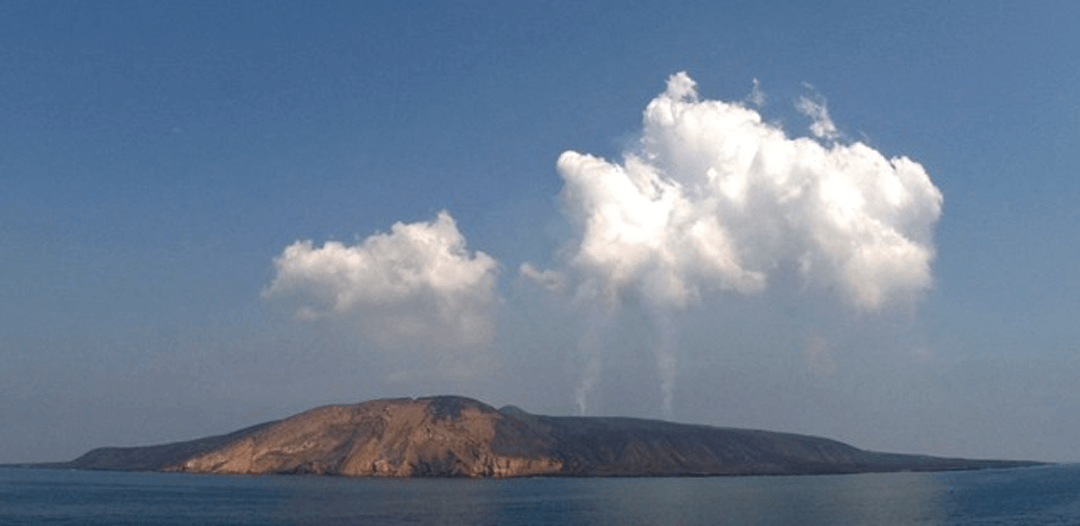
The eruption of Jebel-at-Tair on September, 30 2007 sent lava flows to the ocean. Photo credit: U.S. Navy
Future studies of supervolcanoes
Stenchikov said there have not been enough studies or observations concerning the initial stage of volcanic eruptions. Further, existing climate models used to study the impact of volcanic eruptions do not provide adequate details. To address this gap, he and team modified existing models to better understand the first stages of volcanic cloud development.
"We found that differential heating was essential to the initial burst of the volcanic cloud and its separation into layers, which affected its dynamic and chemical evolution," he said. "Our model showed that during the first week after the 1991 Pinatubo eruption, the volcanic cloud rose into the atmosphere one kilometer per day. This was driven by volcanic ash solar absorption, and later by sulfate aerosol absorption of solar and terrestrial radiation."
Stenchikov noted these findings may be helpful for a range of industries, such as aviation safety, and the models could be used as tools for understanding climate and geo-engineering technologies.
Related Links
- Modeling volcanic debris clouds, Eos
- 75,000 year-old supervolcano eruption in Sumatra linked to drop in atmospheric ozone levels
-
Ancient volcanic eruption destroyed the ozone layer

